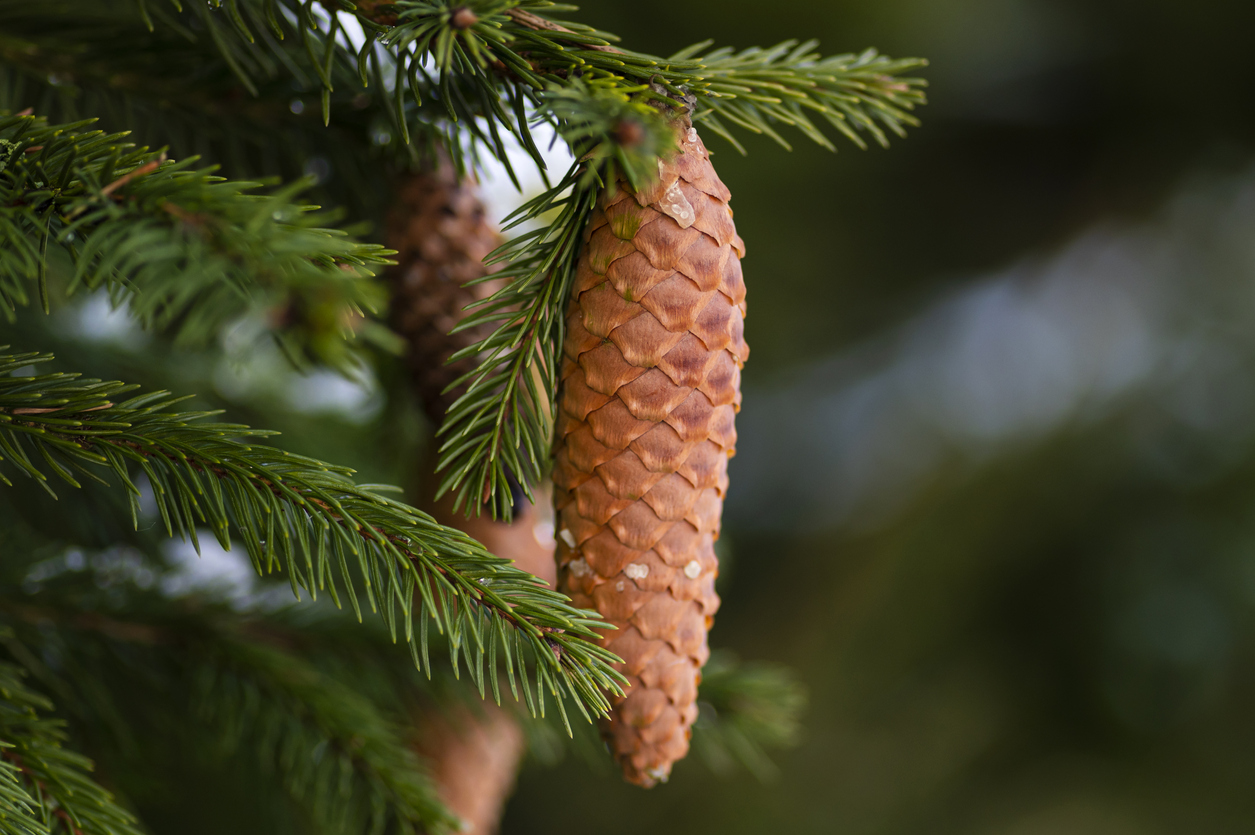Fir parquet
Naturally beautiful, timelessly sturdy – where beauty meets durability.
The fir, a majestic tree species from the pine family, has played a fascinating role throughout history. With its evergreen needles and characteristic conical growth, the fir tree is more than just a symbol of Christmas (strength and stability); people also turn to it as an important resource. There are more than 40 different species of fir worldwide.
Even now, the fir tree is used in many different ways. Its wood is used in the construction industry, furniture manufacturing and paper production. Despite modern technologies and materials, the fir tree remains a valued resource that is firmly rooted in human history.
The facts
Wood species: Fir (Abies)
Wood colour: light reddish-white to yellowish-white
Hardness: very soft to soft
Use: construction timber, solid wood panels, windows, doors, flooring, packaging material

Timeless, rustic elegance
Due to its sturdy structure and straight growth, fir was a favoured building material for the construction of houses, barns and other buildings. Fir wood was easy to work with and yet also resistant to weathering, making it an ideal choice for builders.

Die Nadeln und Tannen dieser Baumart sind charakteristische Merkmale die in Wäldern auf der ganzen Welt zu finden ist. Die Nadeln der Tanne sind schmal, spitz und immergrün, was bedeutet, dass sie das ganze Jahr über ihre Farbe behalten und somit auch im Winter Farbe in die Landschaft bringen.
Die Nadeln der Tanne wachsen in Büscheln oder Spiralen an den Zweigen und können je nach Art und Standort der Tanne unterschiedliche Längen und Farbtöne aufweisen.
Did you know?
The history of the fir tree goes back a long way and is closely linked to human development and culture. Firs are conifers from the pine family and have long been used throughout history by humans.
Early civilisations often regarded the fir tree as a symbol of strength, constancy and renewal. In many cultures, fir trees were associated with fertility, life and immortality. Their evergreen needles were regarded as a sign of life, even in the cold winter months.
The fir tree played an important role in various mythological and religious traditions. In some cultures, the fir tree was revered as a sacred tree and associated with deities or spiritual symbols. In other cultures, it was a symbol of the cycle of life, as it remained green throughout the year, symbolising hope and constancy.
Throughout history, people have also used fir as a source of essential oils, incense and other commercial products. Nowadays, fir is still used for a variety of purposes: as a building material, in medicine, in perfumery or as a decorative element, just to name a few.
The history of the fir tree is rich in meaning and diversity and reflects the close connection between man and nature. Despite the passage of time, the fir tree remains a fascinating symbol of constancy, hope and vitality.
Fir tree, the healing Christmas queen
To this day, the fir tree is also said to have healing powers. Various parts of the tree, including the needles and resin, have been used in traditional medicine to treat various ailments such as coughs and muscle pain. The aromatic resin of the fir tree is often used to make ointments and tinctures, for example.
The fir tree also plays a symbolic role in many cultures and has often been associated with strength, reliability and renewal, which is also reflected in its use as a Christmas tree. Ultimately, fir has uses that extend beyond practicality, including spiritual and cultural significance.








